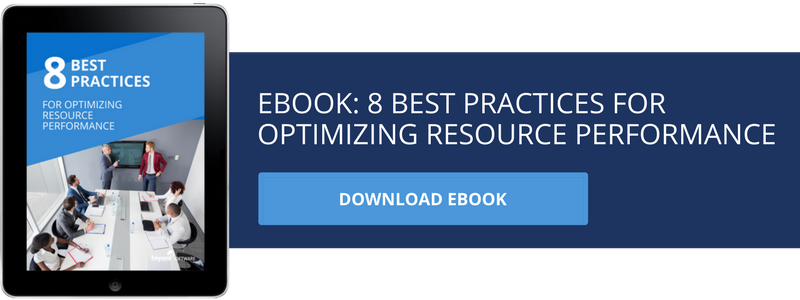"I think there is a world market for maybe 5 computers"
- Thomas Watson, Chairman, IBM 1943
In 1903 the president of the Michigan Savings Bank was said to have advised Henry Ford’s lawyer not to invest in the Ford Motor Company with the following statement;
“The horse is here to stay, but the automobile is only a novelty – a fad.”
It seems people are often unable to predict the future and either end up making horribly bad or wildly optimistic predictions. Why is it so hard for companies to make accurate predictions regarding their projects? And what can they do to minimize the risk that project estimates represent to their company?
Managing projects, programs, and portfolios
The CEO of a professional services company was lamenting the fact that his project managers were constantly misquoting project estimates. This led to a corporate culture of micromanagement and this in turn led to a high employee turnover rate. After auditing the organization, it was determined they had a serious “visibility problem” and they are not alone. In a study undertaken by Geoff Ashley & Associates, a small group of professional services leaders were asked to honestly admit to whether or not their companies managed projects, programs or portfolios. The universal response was (in addition to the looks of confusion) that they all manage to projects. This, in a nutshell, is why we are so bad at estimating project costs.
Consider that a project has a beginning and an end. Once it is completed, the project is closed and in many cases, it is never to be heard from again. A program approach, on the other hand, brings similar projects together which can give your organization access to critical project management KPI’s. A program approach to project management, therefore, can sometimes help you learn from one project to another similar project. If every project you take is similar to the last project, this approach can work very well.
But how often does that happen? A portfolio approach means that you have a more centralized view of all of your projects across the entire organization. In addition to seeing KPI’s, you can also develop best practices and other mission-critical metrics that can have a significant impact on your project profitability. Projects begin and end, but the portfolio continues forever (hopefully).
Portfolio management gives CEO’s and CFO’s, as well as, other senior project management staff, an aggregate of all of the costs, value and risk associated with their projects. If things are going badly in one area of the business, a manager can quickly allocate resources to bring any given project back into budget – or at least give the organization the ability to mitigate the extent to which the project goes over budget. This is especially critical when your organization has silos based on industry practices. It is often the case that one partner is unaware of the issues facing a partner in a different, unrelated practice.

Maybe even more importantly, if the organization takes a portfolio approach to project management, and their project management software solution is collecting and analyzing all of the available data, the senior management team may obtain a perspective that in some situations is counter-intuitive.
If your project accounting software provides analytics, dashboards and reports that span an entire portfolio at once, you might determine that a project that is going off the rails does not “deserve” the investment of resources required to bring it back into scope. I realize that most of us feel every client (project) is worthy of our best efforts, but sometimes this simply is not the case. A portfolio view gives you information that allows you to understand that sometimes it is more appropriate to focus in other areas in order to maximize your profitability across all of your projects. The needs of the many…
Common issues that affect estimating accuracy
This holistic view of an organization helps to eliminate some of the most common issues facing professional services organizations today:
1. Too many projects:
Are individual (or practice) goals inconsistent with company goals? This is a tough one. If I want to make partner in many firms, I have to bill a certain number of hours. If I want my bonus, I need billable time. So I am incented to approve projects that might not always be the most profitable and/or appropriate.
This is a project-focused culture instead of a portfolio-based culture. It leads to too many projects being undertaken – or too few resources being available when needed. Individual goals may not incent collaboration by managers across the company.
2. Self-fulfilling prophecy:
Because we take on too many projects, we are pulled in too many directions. We become less efficient. We lose billable time by not accounting for all of our time. In some companies, the ability to bill multiple clients for the same hour is not only encouraged, it is rewarded. We ultimately become less productive, effective, efficient and ultimately less profitable. Projects fall behind or get out of scope.
3. Data suffers:
How many companies complain about project managers not filling in their time sheets? It is a universal issue/problem. If only that were the only problem… In a study by R.G.Cooper of more than 300 organizations they stated there were “… major weaknesses in the front-end of projects: weak preliminary market assessments, barely adequate technical assessments, dismal market studies and marketing inputs, and deficient business analysis.” Why is this so? Go back to #1. Because the focus is on billable time over everything else, time spent researching and then communicating mission-critical information about the client is overlooked. Non-billable time is non-existent. Client satisfaction is compromised. Everything suffers.
4. The “Big is Better” disconnect:
This is another interesting phenomenon. I was working with a professional services company that had seen average project revenue steadily increase for three years in a row. These larger projects, of course, bring with them larger potential for risk. If you fail in a small project, it is not as potentially harmful as failing with a large project. In addition, with larger projects you tend to have “all your eggs in one basket”. This particular partner found that they were consistently ending the quarter with the “need” to close 100% of their proposals in order to meet their goals.
No one can be 100% successful all the time. If you have four outstanding proposals at the end of the month, you only have to be 25% successful. This is much more likely. This partner started intentionally looking for, and winning, smaller engagements. Now they have a huge resource issue. There is a lag behind obtaining a project and hiring resources to deliver on projects. This is where a portfolio view is essential.
5. Put a bullet in it:
Sometimes you just have to kill a bad project. This is not something anyone wants to do, but in some cases, the entire organization suffers due to a lack of perspective. To keep the portfolio healthy, you might need to eliminate a bad project early – before it eats into the profits of other projects. To hit your organizational goals, you might have to sacrifice a practice goal. Should that automatically penalize everyone in the practice?
If you are able to utilize your project accounting solution to analyze your portfolio instead of just individual projects, you will be able to estimate projects more successfully as well as managing projects more profitably. Once you have the tools, all you need is the desire and the culture.
For additional information on the project accounting solution to manage and analyze your project portfolio please contact:
Nicole Holliday
nholliday@beyondsoftware.com
866-510-7839




